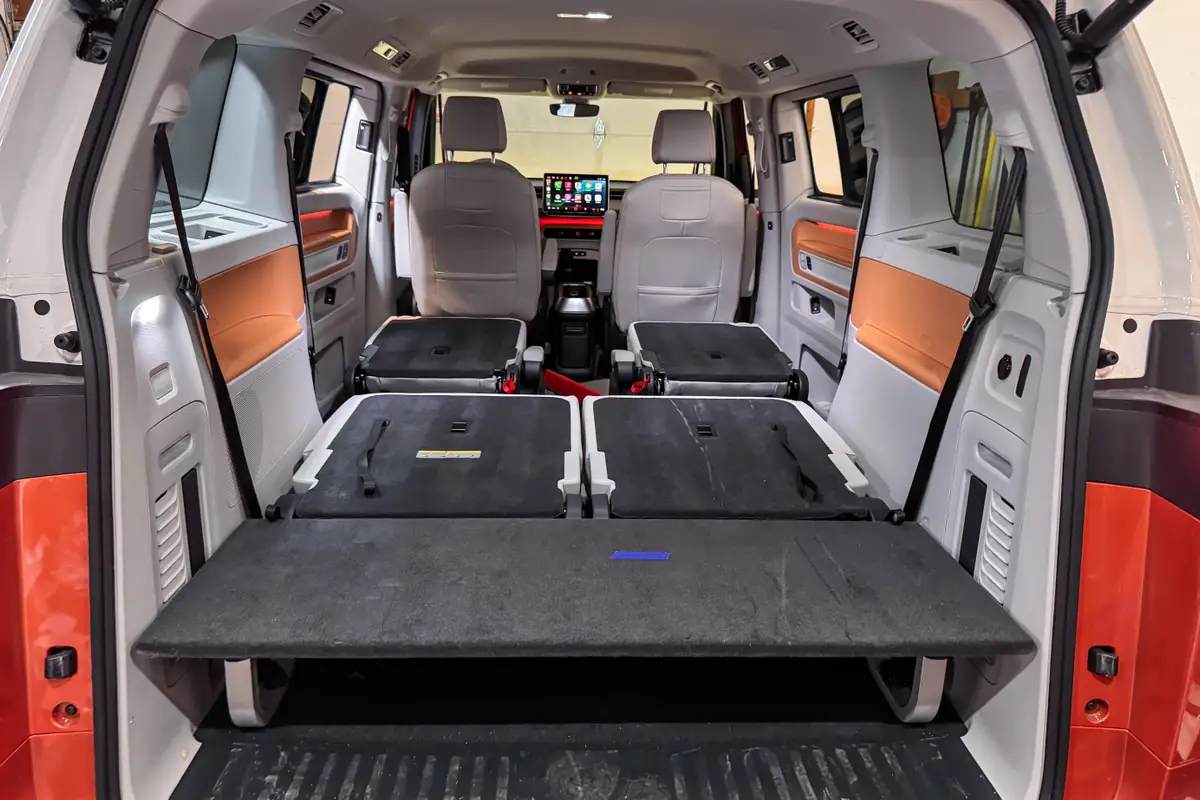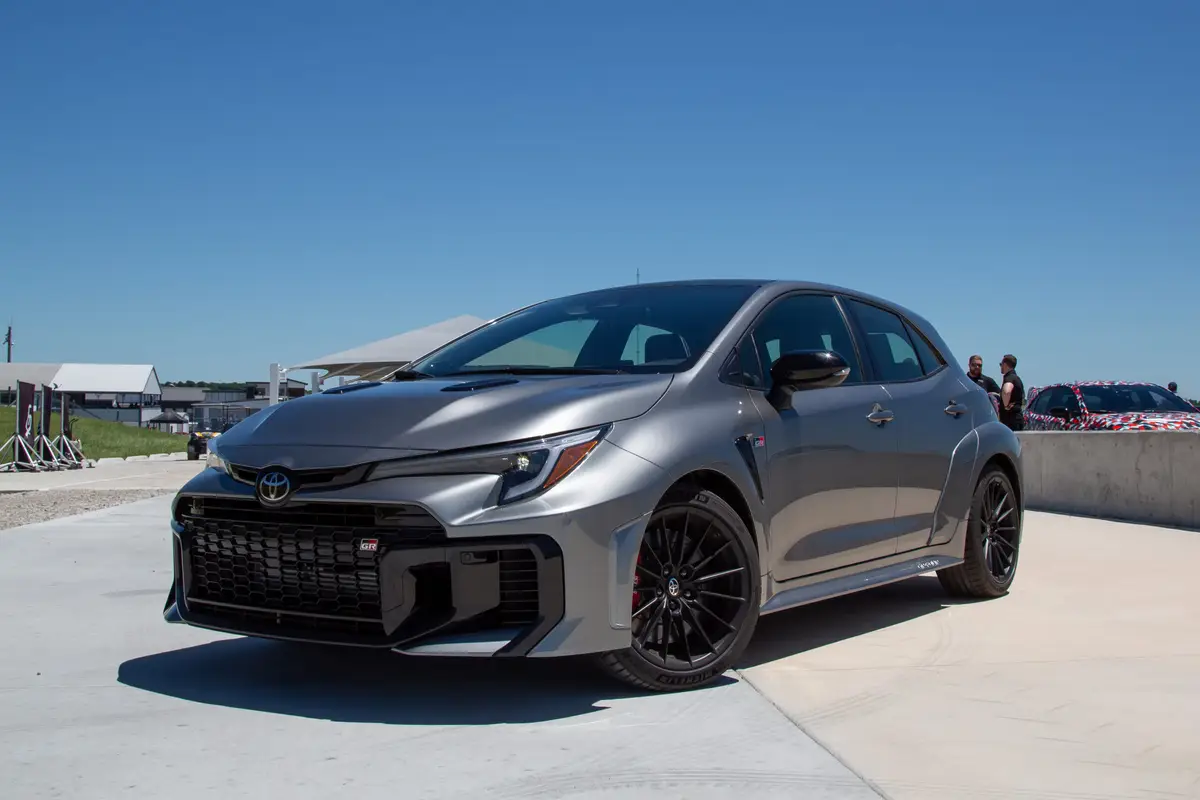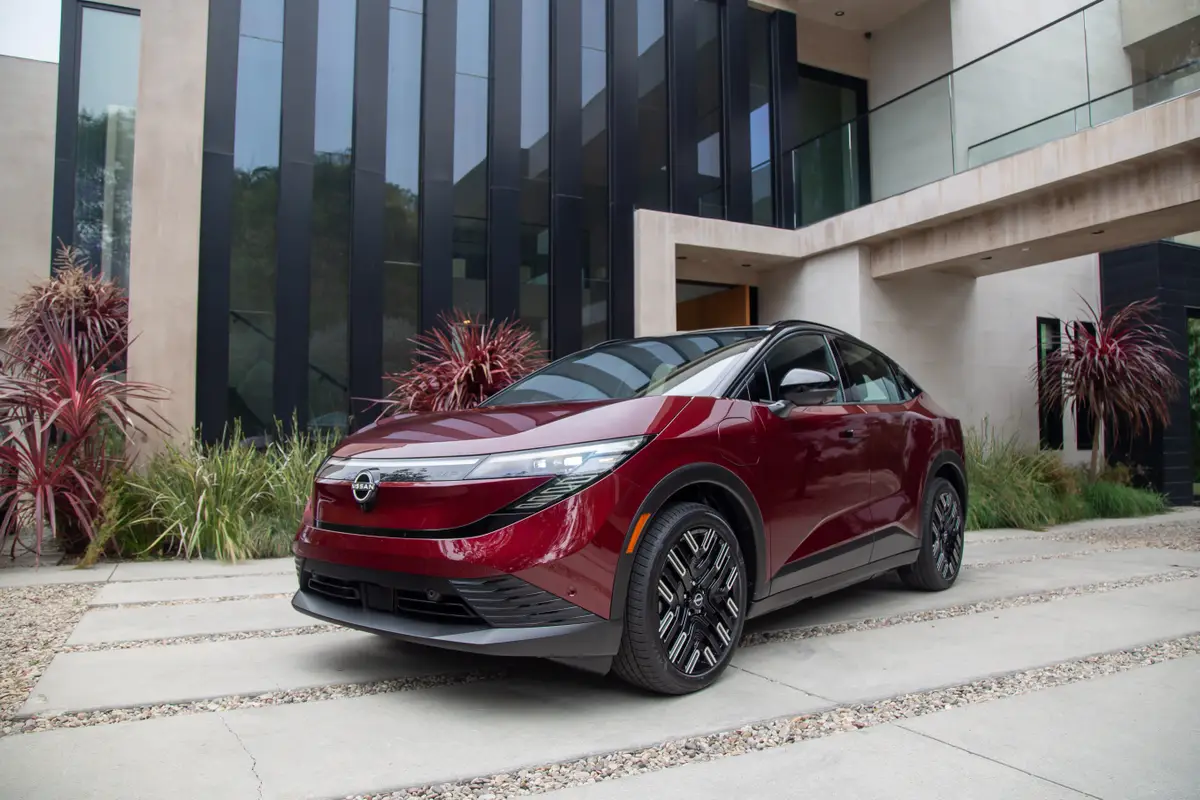2016 Kia Optima: Car Seat Check

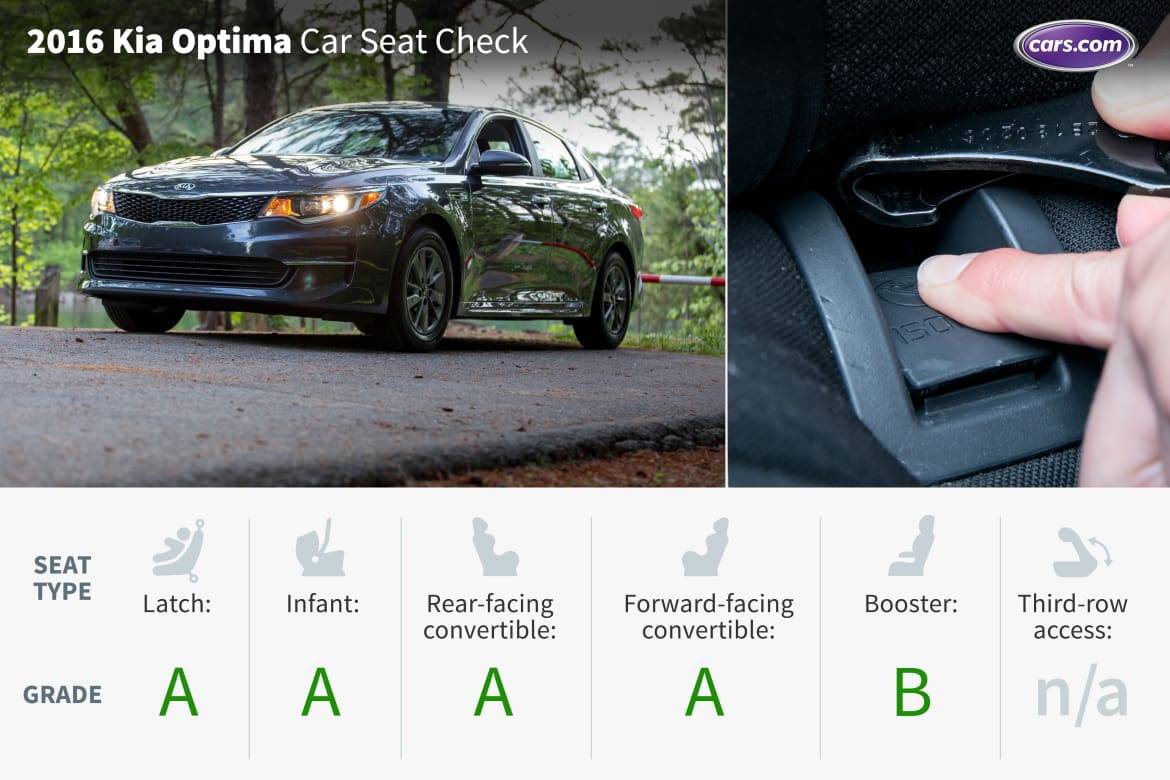
CARS.COM — With its 2016 redesign the Kia Optima grew in length, but more importantly for families, it increased its rear legroom too. The 2016 Optima has 35.6 inches of rear legroom, up nearly an inch compared with the 2015 version. This means our rear-facing child-safety seats fit well in the rear seats, and it’s likely that gangly teens will too.
How many car seats fit in the second row? Two
What We Like
- The Optima has two sets of lower Latch anchors in the outboard seats. The anchors sit under hinged covers, making them easy to use. Three tether anchors are on the rear shelf behind the head restraints; they’re well-marked and easy to use.
- Our rear-facing infant seat installed easily into the Optima’s backseat. We had to move the front passenger seat forward slightly to fit this car seat behind it, but our 5-foot-6 tester still had plenty of legroom.
- Both the forward- and rear-facing convertible seat installed easily and fit well.
- After we raised the rear seat’s head restraint, our high-back booster seat also installed easily.
What We Don’t
- We found the rear seat belt buckle stalks to be too short for young kids in booster seats to use independently.
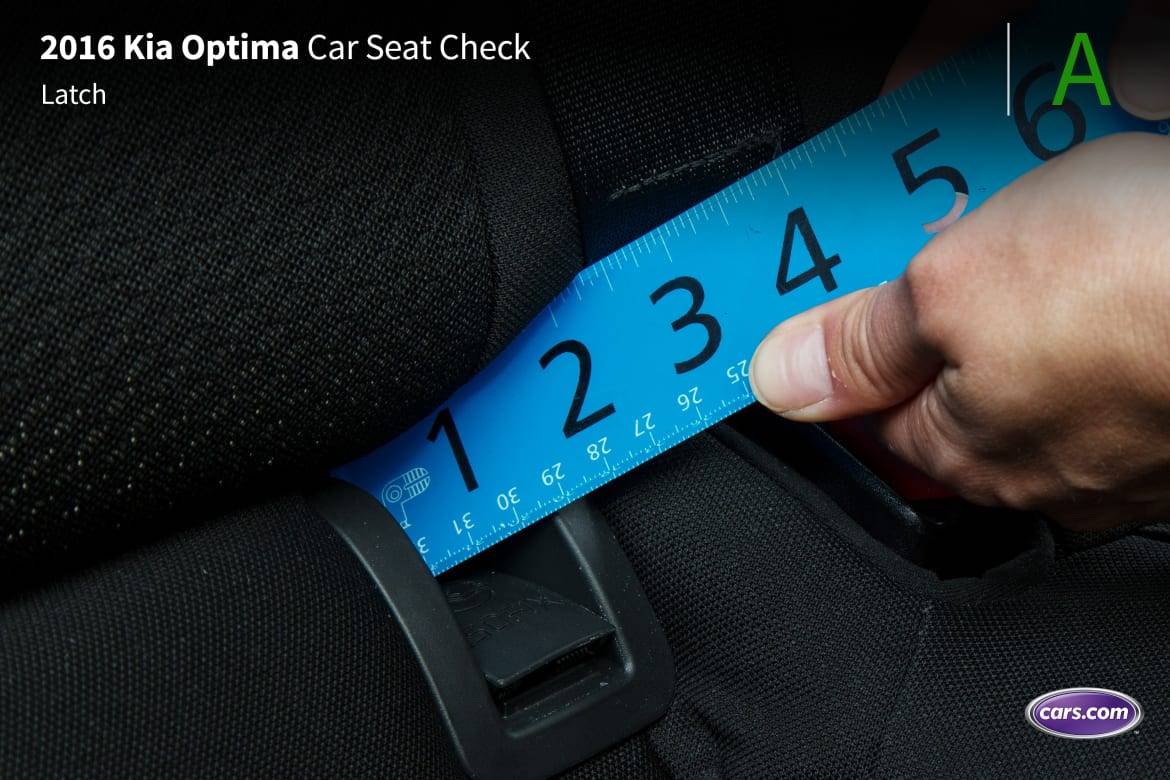
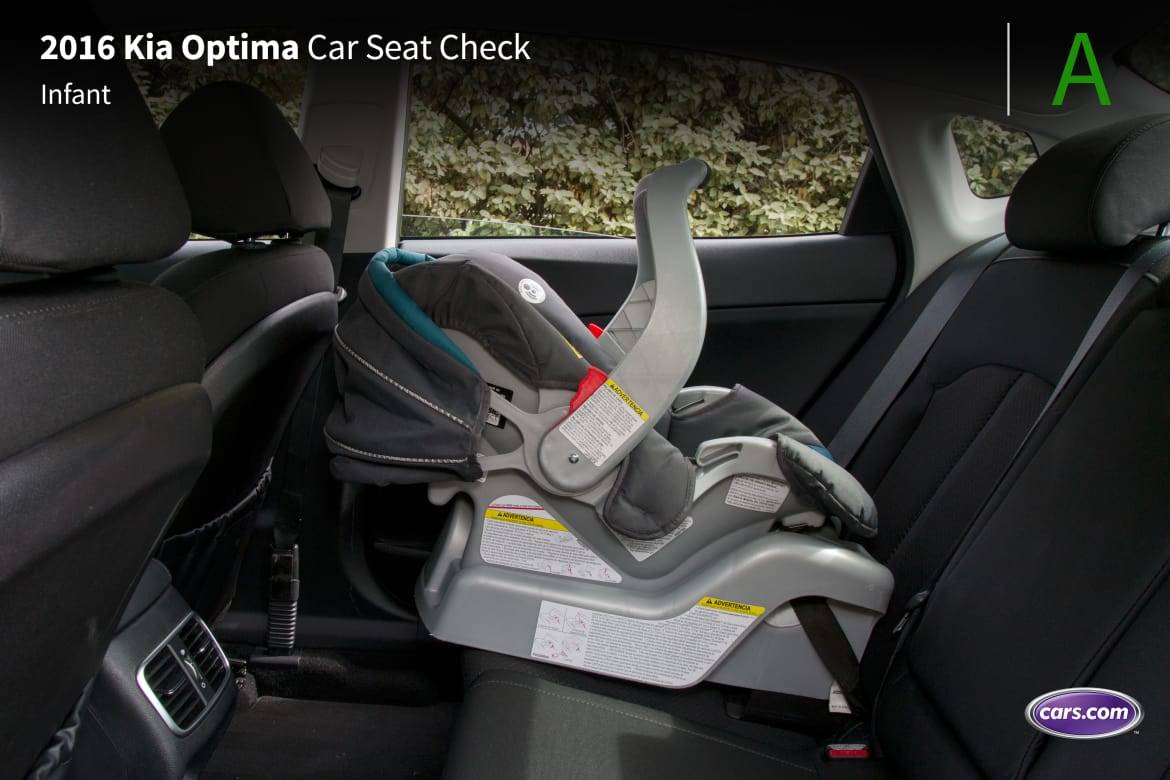
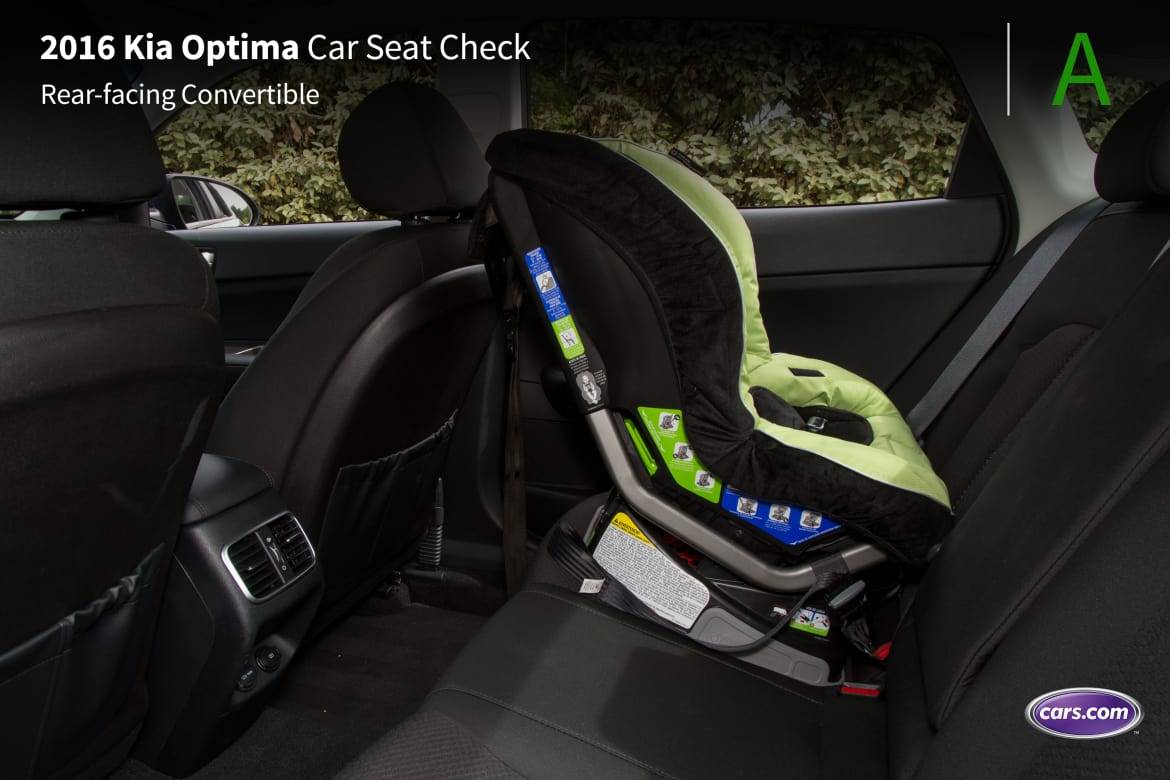
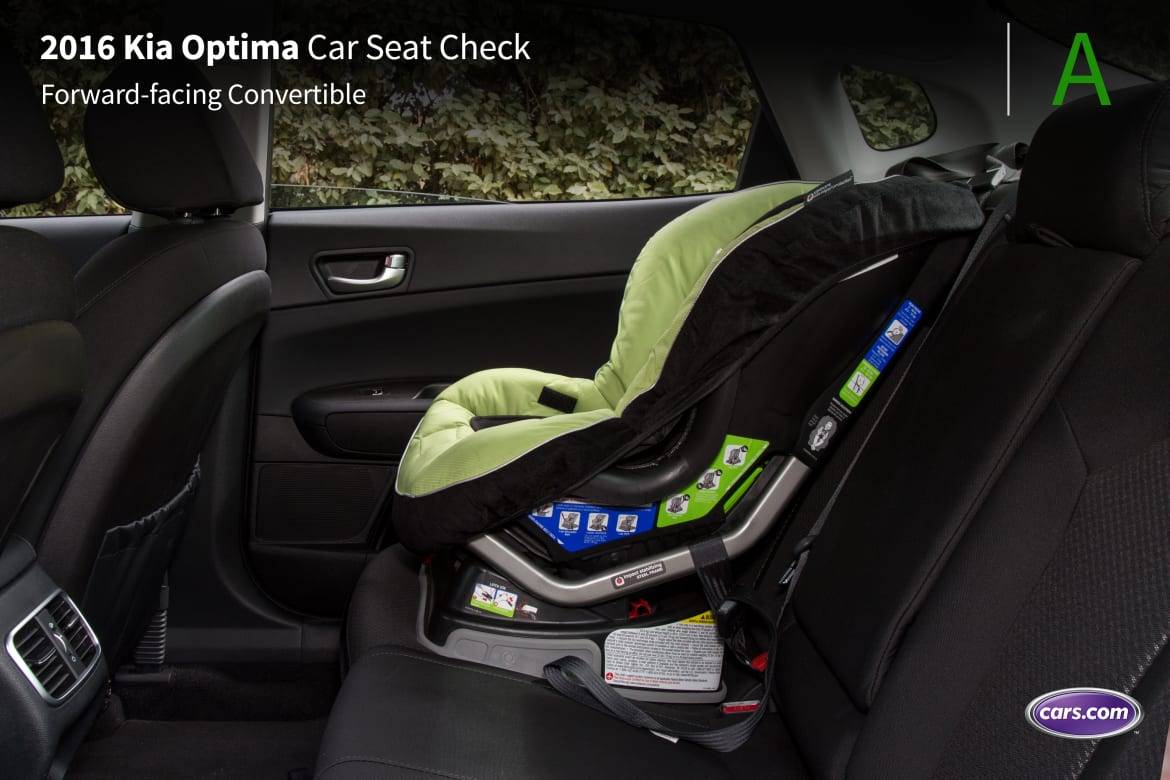
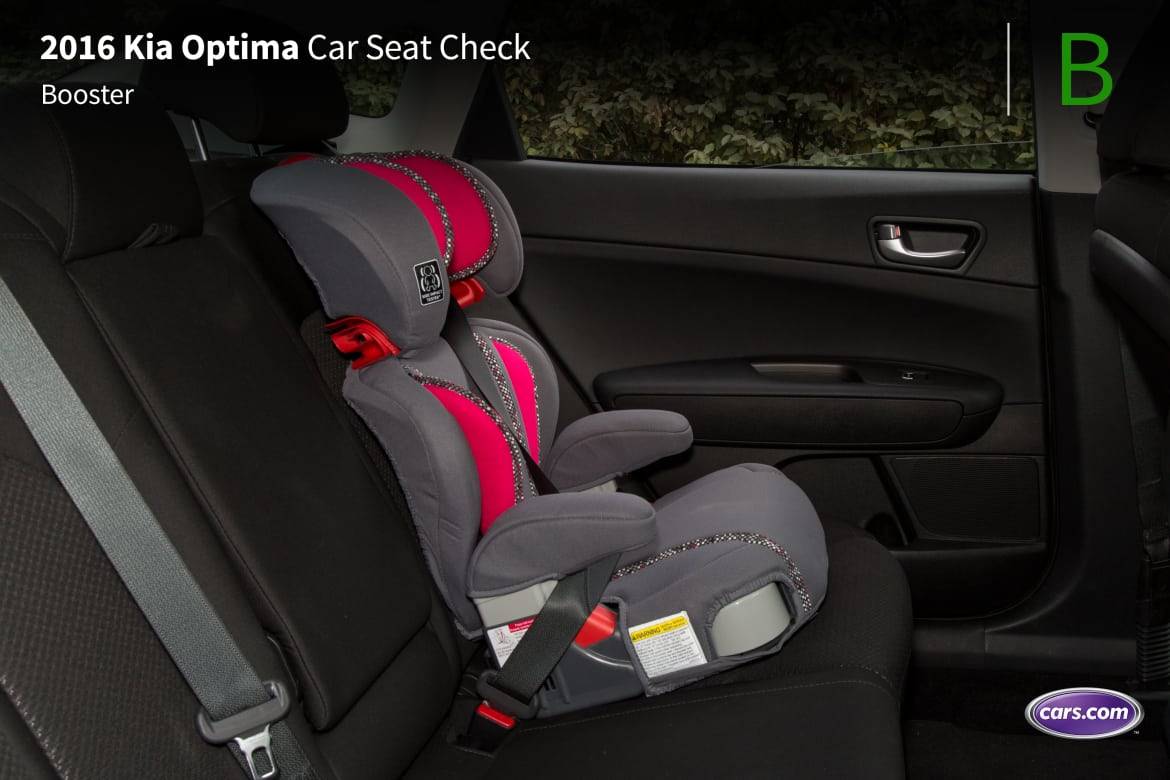





Grading Scale
A: Plenty of room for the car seat and the child; doesn’t impact driver or front-passenger legroom. Easy to find and connect to Latch and tether anchors. No fit issues involving head restraint or seat contouring. Easy access to the third row.
B: Plenty of room. One fit or connection issue. Some problems accessing third row when available.
C: Marginal room. Two fit or connection issues. Difficult to access third row when available.
D: Insufficient room. Two or more fit or connection issues.
F: Does not fit or is unsafe.
About Cars.com’s Car Seat Checks
Editors Jennifer Geiger, Jennifer Newman and Matt Schmitz are certified child safety seat installation technicians.
For the Car Seat Check, we use a Graco SnugRide Classic Connect 30 infant-safety seat, a Britax Marathon convertible seat and Graco TurboBooster seat. The front seats are adjusted for a 6-foot driver and a shorter passenger. The three child seats are installed in the second row. The booster seat sits behind the driver’s seat, and the infant and convertible seats are installed behind the front passenger seat.
We also install the forward-facing convertible in the second row’s middle seat with the booster and infant seat in the outboard seats to see if three car seats will fit; a child sitting in the booster seat must be able to reach the seat belt buckle. If there’s a third row, we install the booster seat and a forward-facing convertible. To learn more about how we conduct our Car Seat Checks, go here.
Parents should also remember that they can use the Latch system or a seat belt to install a car seat, and that Latch anchors have a weight limit of 65 pounds, including the weight of the child and the weight of the seat itself.

Editor-in-Chief Jennifer Newman is a journalist with more than 25 years of experience, including 15 years as an automotive journalist at Cars.com. Jennifer leads the Editorial team in its mission of helping car shoppers find the vehicle that best fits their life. A mom of two, she’s graduated from kids in car seats to teens behind the steering wheel. She’s also a certified car-seat technician with more than 12 years of experience, as well as member of the World Car Jury, Automotive Press Association and Midwest Automotive Media Association. LinkedIn: https://www.linkedin.com/in/jennilnewman/ Instagram: @jennilnewman
Featured stories
